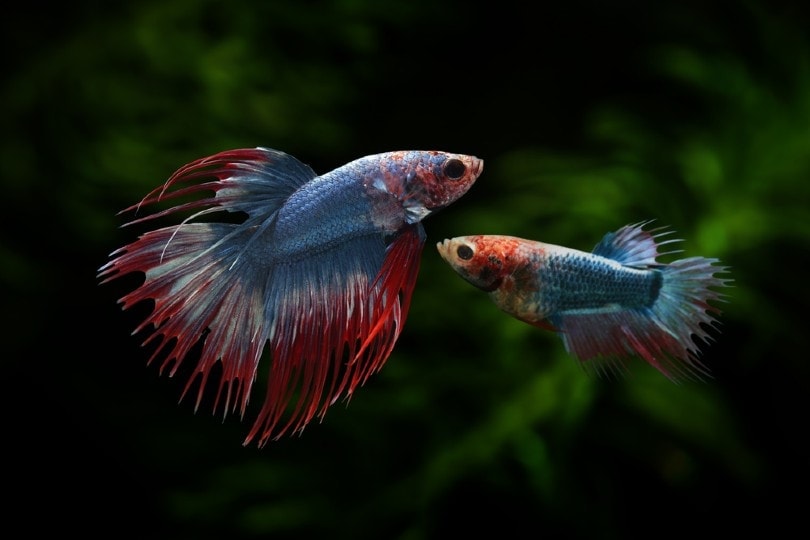How to Grow Betta Bulbs: Step-by-Step Aponogeton Guide
Updated on
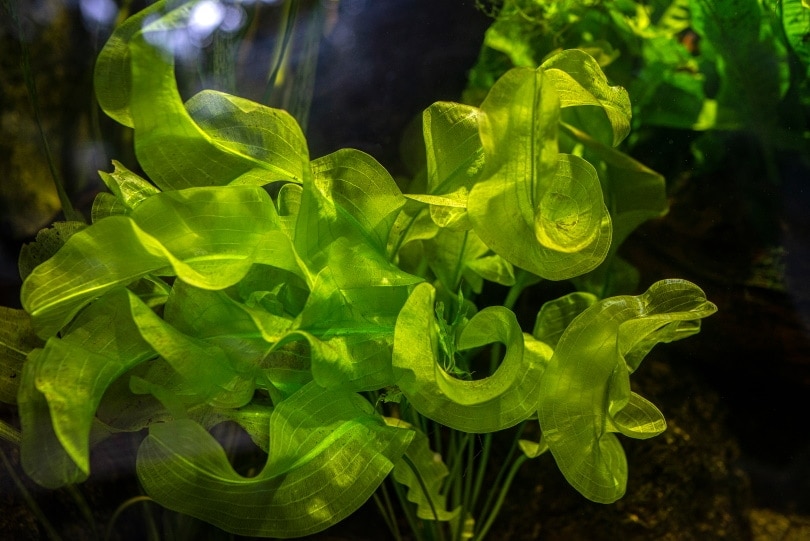
One of the intimidation aspects of fish keeping is growing and maintaining live plants in an aquarium. Newbies and experienced fish keepers alike are in luck, though. When it comes to aquatic plants, there may not be a plant that’s easier to grow than Betta Bulbs. Here’s everything you need to know about Betta Bulbs, including step by step growing instructions.
What are Betta Bulbs?
Betta Bulbs are a type of aquatic plant named Aponogeton. Aponogeton is indigenous to temperate and tropical parts of Asia, Africa, and Australasia. These plants grow long, narrow leaves from large bulbs. They grow rapidly and are often overlooked by curious fish who are prone to eating or uprooting plants. You’re more likely to spot these in dry bulb form in a pet store than being sold as a whole plant. Aponogeton ulvaceus is the most common form of this plant sold in the aquatics trade, but it is available in multiple varieties, including the unique Aponogeton madagascariensis, or Madagascar Lace, which has delicate, lace-like leaves.
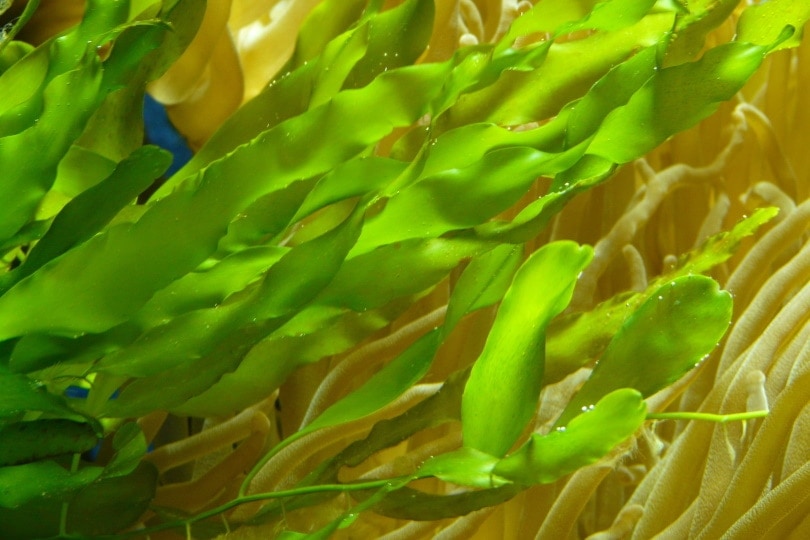
What Kind of Water Parameters do Betta Bulbs Need?
As the name implies, Betta Bulbs grow well in the type of water parameters that Betta fish thrive in, although they can thrive in slightly cooler water than what a Betta needs as well. Ideally, this plant should be kept between 72–82˚F. It prefers relatively neutral water with a pH between 6.5 and 7.5. It can grow rapidly in tanks with just about any lighting, but it tends to grow more quickly with more lighting.
The 4 Steps to Grow Betta Bulbs
1. Plant It
Betta Bulbs are not perfectly round, so you’ll need to start by identifying the thicker end of the bulb. It will have two distinct “ends”; one is the root end, and the other is the growth end. The thicker end is the root end of the bulb. This is the end you will plant in the substrate. You don’t need to fully bury the bulb. In fact, this can kill the plant before it gets going. Plant it just deep enough to hold the bulb into place. Keep in mind that these bulbs can float if not planted deep enough.
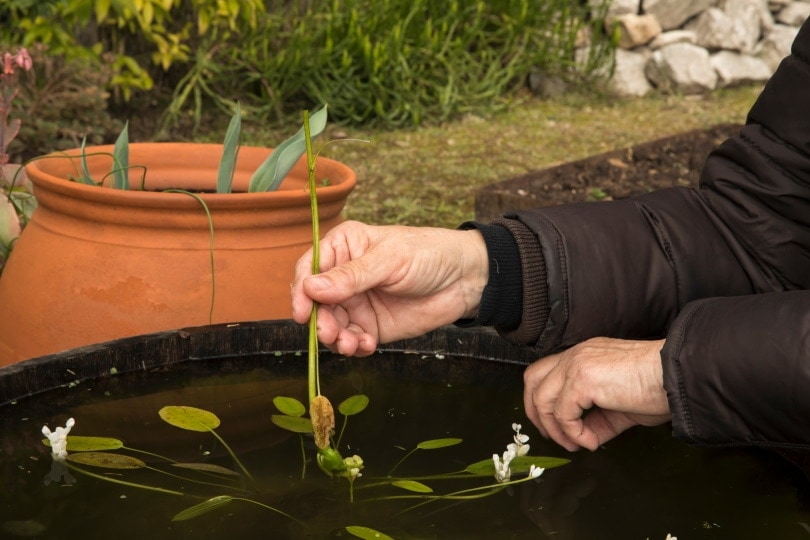
2. Feed It
This plant is a root feeder, which means that it absorbs almost all of its needed nutrients through its roots, as opposed to some aquatic plants that are able to absorb nutrients from the water column. This means that you will either need a nutrient-rich substrate or you’ll need to routinely provide your Betta Bulb with root tabs, fertilizer capsules, or other aquarium-safe plant fertilizers that reach the roots. The more it has to eat, the faster and larger it will grow.
3. Prune It
As your Betta Bulb grows, it may begin to have some leaves slowly die off from time to time. It’s a good idea to prune and remove dying leaves so they are not rotting in the tank. If you have animals in the tank that eat detritus or dead plant material, then you can leave these leaves to be eaten.
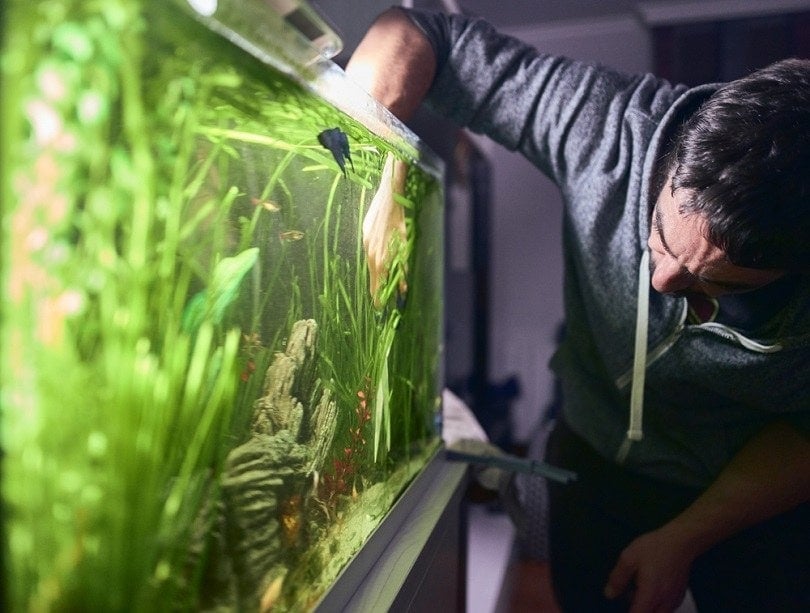
4. Don’t Throw It Out!
The top mistake that people tend to make with these plants is throwing them away when they aren’t dead. It can be confusing when you first see it, but Betta Bulbs do go through a period of dormancy. This dormancy typically happens for a few months every year. When it begins to go dormant, all the leaves will drop from the plant, giving the plant the appearance of being dead. Unless there are obvious signs of rot, like mold or mushy spots on the bulb, then you should leave the bulb where it’s planted and wait for it to begin growing again.
Final Thoughts
Betta Bulbs are truly one of the easiest and hardiest aquarium plants. They grow rapidly and make a great middle or background plant for just about any aquarium. Their size makes them ideal for tanks that are at least 10 gallons, but one Betta Bulb can be a great addition to a smaller, tall tank as well. These plants are practically foolproof as long as you give them the water parameters and nutrients they need. They are a good source of oxygen and will help remove waste products, like nitrates, from the water column.
See Also:
- How to Anchor Aquarium Plants (8 Expert Methods)
- How To Clean Live Aquarium Plants: 3 Easy Methods & FAQs
Featured Image Credit: Kuttelvaserova Stuchelova, Shutterstock


